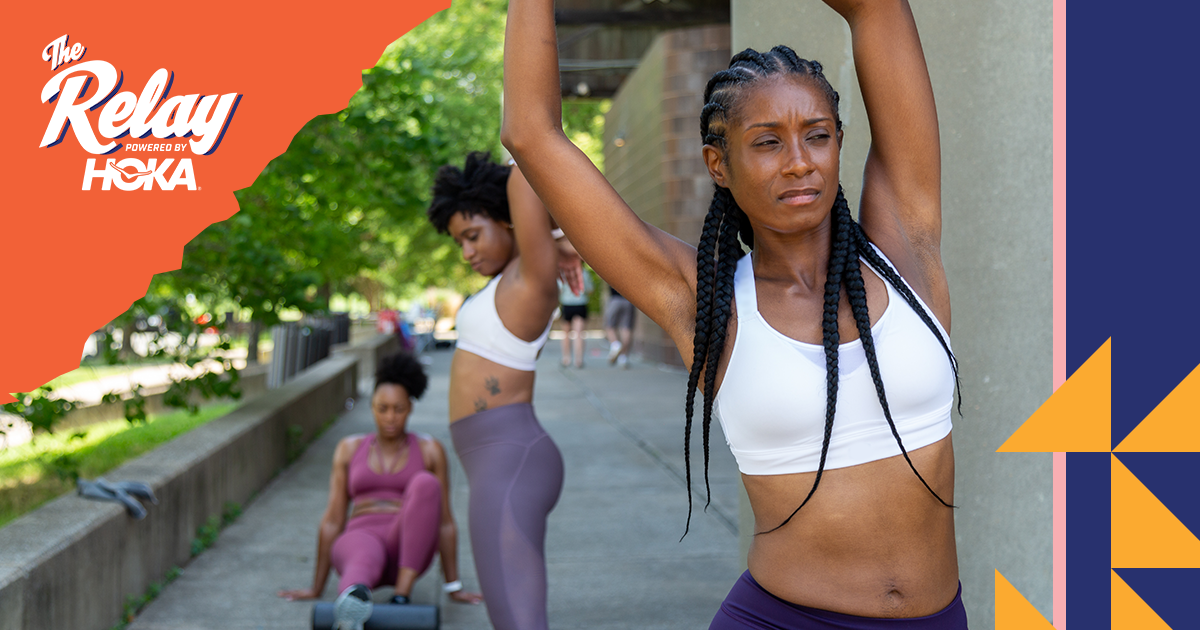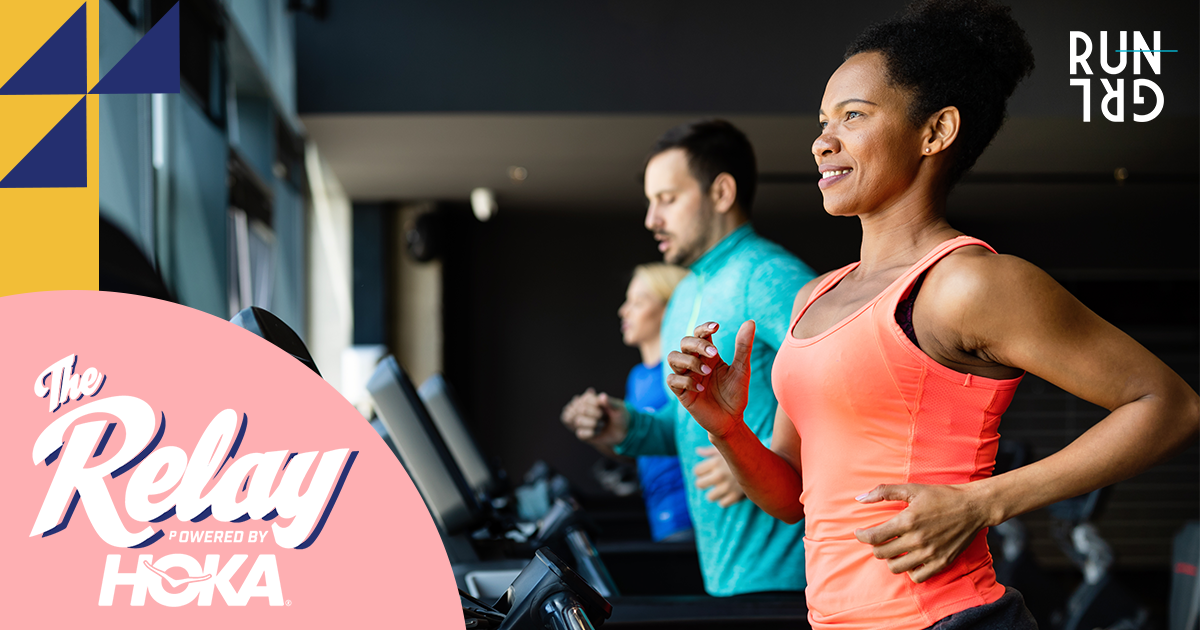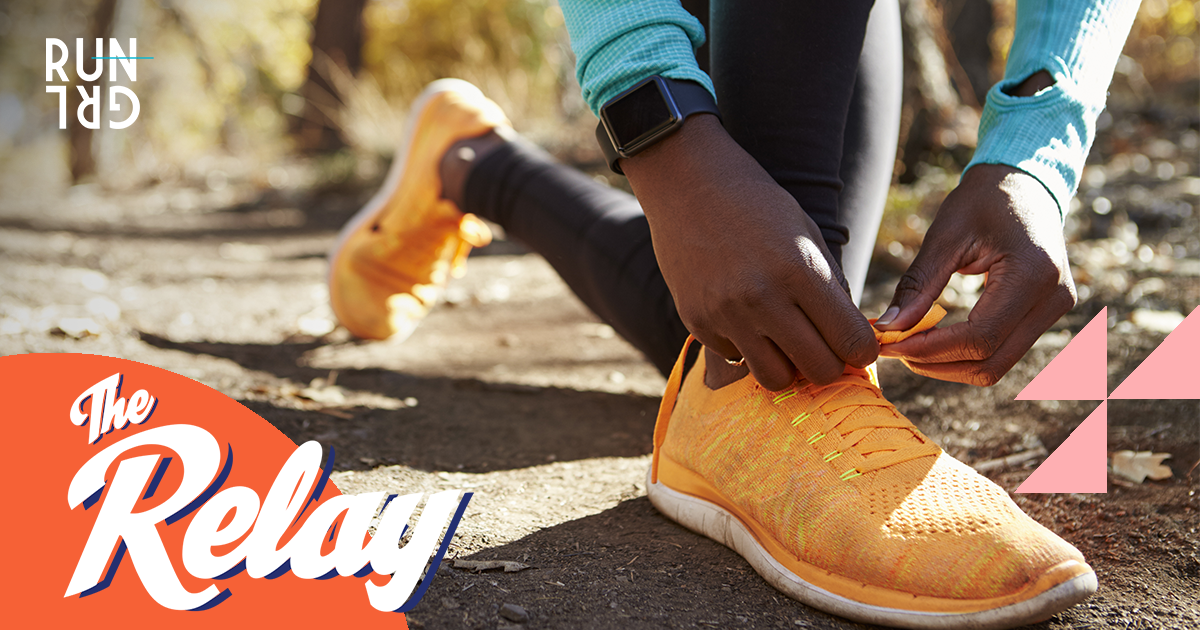The Relay: Understanding Different Types of Running Workouts
Photo: Danell Hankins/RUNGRL Design
by Jasmine Nesi, RUNGRL Co-founder and Relay Squad Coach
Whether you’re new to running or have been running for years, it is important to diversify your run workouts. Switching up the types of running you do increases strength and endurance, helps reduce the risk of injury, increases running efficiency and aerobic capacity, and makes things more fun!
Our bodies need variety, particularly when it comes to workouts. Below are eight types of workouts--each with a different purpose--for runners of all levels to incorporate into your training plan and add some spice to your weekly runs.
Easy Run
It’s just as important to take it slow at times as it is to push your limits. The easy run helps develop your aerobic potential (your ability to run with oxygen), which allows you to run longer. Easy runs should make up the majority of your running workouts. They allow you to focus on your form, aid recovery and produce minimal lactic acid buildup in your blood (which can cause pain in your legs and other areas).
How it should feel: Comfortably able to hold a conversation with your running buddy or sing along to song lyrics.
Long Run
Long runs—generally anything beyond five miles—support stamina, endurance and the all-important mental aspect of running. The goal of long runs is to increase the distance you can comfortably and confidently cover in one run and teach yourself to push through fatigue. If you’re preparing for a half marathon or longer, this is a can’t-miss weekly run in your training.
How it should feel: Conversation pace, legs will likely feel heavy as you progress in mileage.
Interval Training
Typically performed on a track or treadmill, interval training focuses on speed. It breaks up high-intensity efforts with recovery periods. Intervals improve running economy, stride, efficiency and fatigue resistance.
How it should feel: Push for a comfortably hard, since the distances are shorter. You may not feel fully recovered to begin the next interval, and that’s okay. Work on the mindset to keep pushing when it hurts.
Sample Interval Workout
1-mile warm-up
800M at half marathon pace (90-sec. recovery)
800M at 10K pace (90-sec. recovery)
800M at 5K pace (2-min. recovery)
Repeat 3 x 800M (aim to match or beat initial paces)
1-mile cooldown
Hill Repeats
One of my favorite workouts is hill repeats, a form of interval training focusing on speed, strength and aerobic power. Hills provide resistance and help build explosive power. Running uphill is a lot easier on the joints, and helps you to become faster on flat ground. It’s not just about the uphill battle, though. Running downhill is harder on the legs, works quads and builds strength in different muscles. As you’re going downhill, allow gravity to do its work and go with it.
How it should feel: As a form of interval training, look for your comfortably hard pace. We like to try and avoid hills, but that’s where you prove you’re stronger than you imagined.
Sample Hill Repeat Workout [2 x 2 x 2 x 1]
Look for a 4-7% grade incline that can be taken between 60-90 seconds
1-mile warm-up
2 reps at half marathon pace
2 reps at 10K pace
2 reps at 5K pace
1 rep all out
*Use downhill for recovery
1-mile cooldown
Tempo Run
One of the hardest runs to do properly is the tempo run, as it tests both your speed and stamina. The tempo run is taken at a comfortable but hard pace (think 85-90% of your maximum heart rate), or right around your 10K pace.
The tempo is also known as a “threshold run” because it tests our lactate threshold, the maximum intensity an athlete can maintain as lactic acid starts to accumulate in your blood. This is where you start to feel the burn in your legs. Tempo runs help to improve your body’s ability to tolerate lactic acid and push past fatigue.
How it should feel: Comfortable but hard, may experience some shortness of breath. Unable to hold conversations or speak in full sentences. I’ll be honest, these hurt, and they’re supposed to. If it doesn’t challenge you, it doesn’t change you.
Sample Tempo Workout
1-mile warm up
3 miles at tempo pace
1-mile cooldown
Fartlek
Fartleks, aka “speed play”, are less structured than tempo runs, and provide the opportunity to have a bit of fun and get creative with your approach. Fartleks allow us to change gears, recruit different muscle fibers. The sample workout below says to increase speed every 5 minutes, but it can be every time one of your favorite songs plays or decide to sprint to the next stoplight - make it fun!
How it should feel: Because this is a creative run, it’s all based on how you feel and holding yourself accountable to your intention for the run. The surges should not feel incredibly hard, and the overall intensity is entirely up to you.
Sample Fartlek Workout
Begin at conversation pace
Every 5 minutes, increase pace for 1 min, then return to conversation pace.
Repeat for 4 miles or 40 minutes
Progression Run
The progression run starts at a conversation pace and progressively gets faster during the course of the run as you increase intensity. The benefit of the progression run is to adopt a finish strong mentality!
How it should feel: Progressively challenging as you fight the lactic acid buildup from your increased intensity. Shooting for 85-90% effort in your final miles, the goal is to maintain that comfortably hard tempo pace to the finish!
Sample Progression Workout [5-mile run]
Begin with one mile at conversation pace and aim to get progressively faster each mile
Your last mile should be your fastest pace.
Recovery Run
One of the most important workouts during a training period is the short run, easily performed at least 24 hours after intense training. These should be taken as slow as you need in order to shake out any soreness. The benefit of a recovery run is to increase fatigue resistance. It also serves as an opportunity to check in with your body.
How it should feel: Easy! Find that conversational, “I could run for hours” pace. As you progress in your running journey, you may find that you take your recovery runs at a progressively faster, but still comfortable pace, which is a solid indicator of progress.
Check out this quick reference guide for each of the different types of running workouts:
View Full-size Graphic and Download
Have questions about how to incorporate these runs into your training or additional running questions? RUNGRL’s latest offering of Black female run coaches and elite athletes, The Relay, will help you through your first, farthest and fastest miles. Shoot us a message.
-
Medical Disclaimer - The above information is not intended as medical advice and does not replace the recommendation of a physician or other medical professional. Always seek the advice of your physician before trying these or any sort of workout or exercise program. View the full medical disclaimer in RUNGRL’s terms of use.
Jasmine is a co-founder at RUNGRL, USATF Level 1 coach and run coach at Mile High Run Club in New York. She’s run three marathons, and completed countless road and trail races from 5Ks to The Speed Project, an ultra-marathon relay race from Los Angeles to Las Vegas.
Jasmine is a member of The RELAY Squad.






















